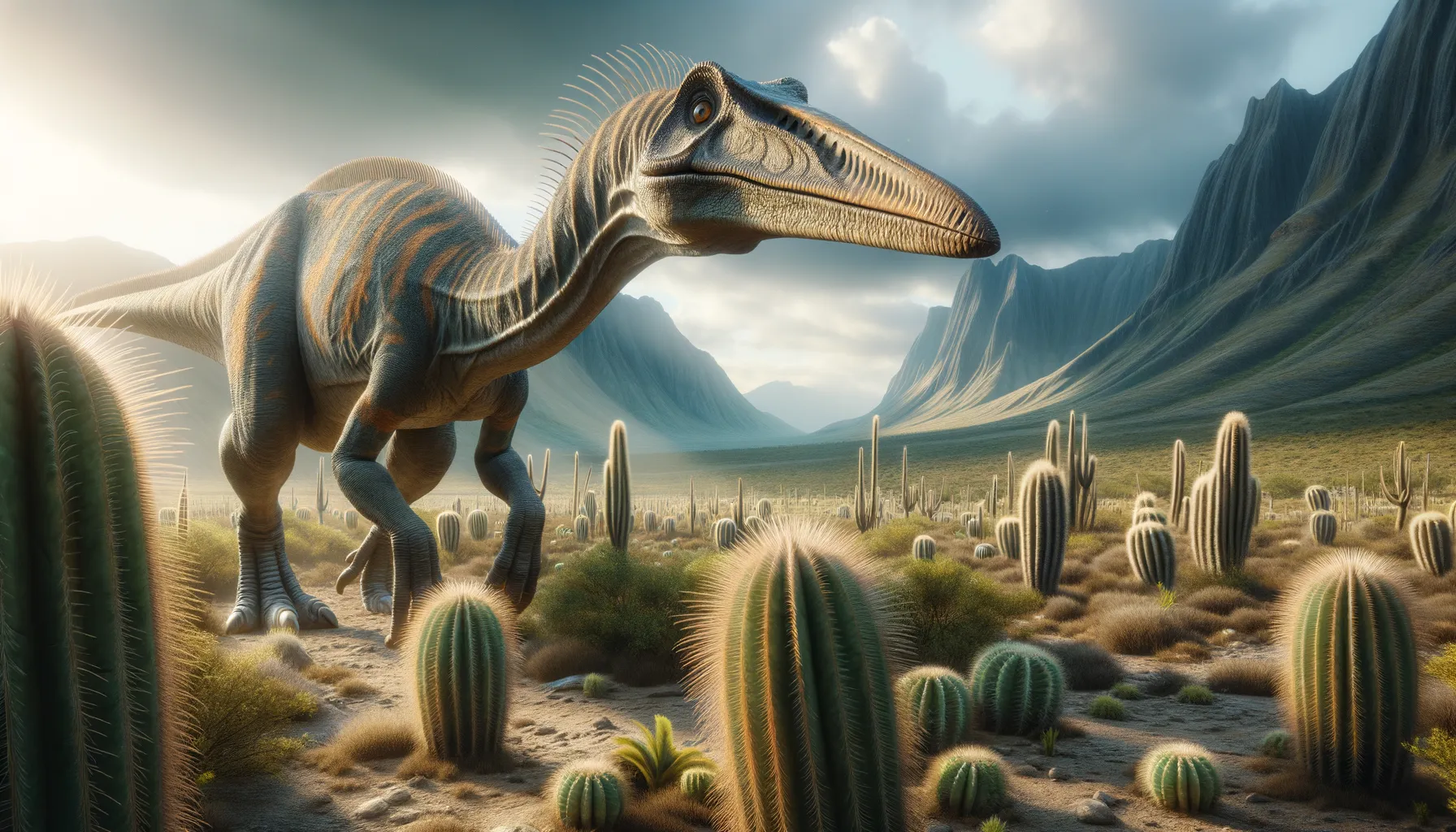
Huehuecanauhtlus
Master of the Cretaceous Leaf Buffet
Period
Cretaceous
Length
Measured around 7 meters in length.
Height
Stood about 3 meters tall at the hip.
Weight
Approximately 1,300 kilograms.
Huehuecanauhtlus was a herbivorous dinosaur from the Late Cretaceous period, primarily known for its flat, wide beak, ideal for grazing. Discovered in Mexico, it represents a key piece in understanding the diversity of duck-billed dinosaurs in North America. This dinosaur displayed features typical of hadrosaurs, like a robust body and long tail, which contributed to its balance as it roamed in search of vegetation.
Diet
Huehuecanauhtlus was a herbivore, relying heavily on the abundant plant life of its era. Its diet likely consisted of leaves, stems, and possibly seeds, which were plentiful in its lush, prehistoric environment.
Hunting
As a herbivore, it did not hunt but foraged for plants. It used its beak to graze efficiently on low-lying vegetation.
Environmental challenges
Living during the Late Cretaceous meant Huehuecanauhtlus faced competition for food from other herbivores. Climatic changes would have also impacted the availability of its primary food sources. Additionally, the presence of predators like large theropods posed a constant threat, requiring vigilance and perhaps group living as defensive strategies.
Speed
Its speed was moderate, allowing for steady travel across its habitat.
Lifespan
It likely lived for several decades.
First discovery
Discovered in 2011 in the state of Puebla, Mexico.
Fun Facts
- Huehuecanauhtlus was a dinosaur that lived about 94 million years ago during the Late Cretaceous period.
- Its name means 'ancient duck', which hints at its duck-billed appearance.
- Huehuecanauhtlus was an herbivore, meaning it primarily ate plants.
- This dinosaur roamed what is now central Mexico, indicating diverse prehistoric life in the region.
- Huehuecanauhtlus is part of the hadrosauroid group, often considered the predecessors of the more famous hadrosaurids or 'duck-billed' dinosaurs.
- Its fossils give us clues about how dinosaurs spread and evolved in North America.
- Huehuecanauhtlus helps scientists understand dinosaur diversity in areas that were once lush landscapes.
Growth and Development
Huehuecanauhtlus went through significant growth from juvenile to adult, likely doubling in size as it matured. The development of its beak and dental apparatus would have been crucial for transitioning from feeding on softer juvenile vegetation to tougher adult plant types. This growth phase would have required ample food supply to sustain their energy needs.
Habitat
Huehuecanauhtlus inhabited regions that were lush and verdant, teeming with plant life, which supported its herbivorous diet. The environment was likely a mix of forests and open plains, offering a variety of plants. Seasonal changes might have affected its migratory patterns as it moved to find supportive grazing areas.
Interaction with other species
As a peaceful herbivore, Huehuecanauhtlus interacted with other herbivorous dinosaurs, potentially forming mixed herds for safety from predators. It coexisted with a variety of smaller and larger species, sharing its habitat with those that fed on different plains or tree levels. Predatory dinosaurs posed a threat, creating a constant need for awareness.
Natural lifespan
Huehuecanauhtlus likely lived naturally for about 30 years.
Reproduction
Huehuecanauhtlus reproduced by laying eggs, likely in nests made from vegetation to protect them from the environment and predators. Parental care in hadrosaurs might have involved guarding eggs and possibly tending to young after hatching. Clutch sizes and nesting behaviors remain subjects of scientific research.
Social behaviour
Huehuecanauhtlus may have lived in herds, as many hadrosaurs did, which offered protection against predators. Herd behavior could have included coordinated movement and communication to locate food and warn against dangers. Within the herd, social hierarchies might have influenced feeding rights and mating opportunities.
Fossil locations
Fossils of Huehuecanauhtlus have been primarily found in Puebla, Mexico. These discoveries have been instrumental in expanding knowledge about hadrosaur diversity in the Cretaceous of North America. The localization of its fossils highlights the regional adaptations and variations that existed among hadrosaurs.
